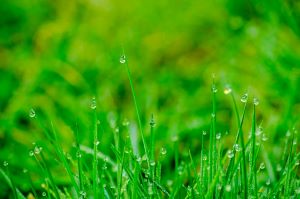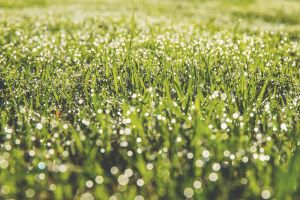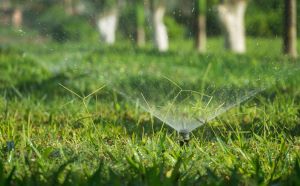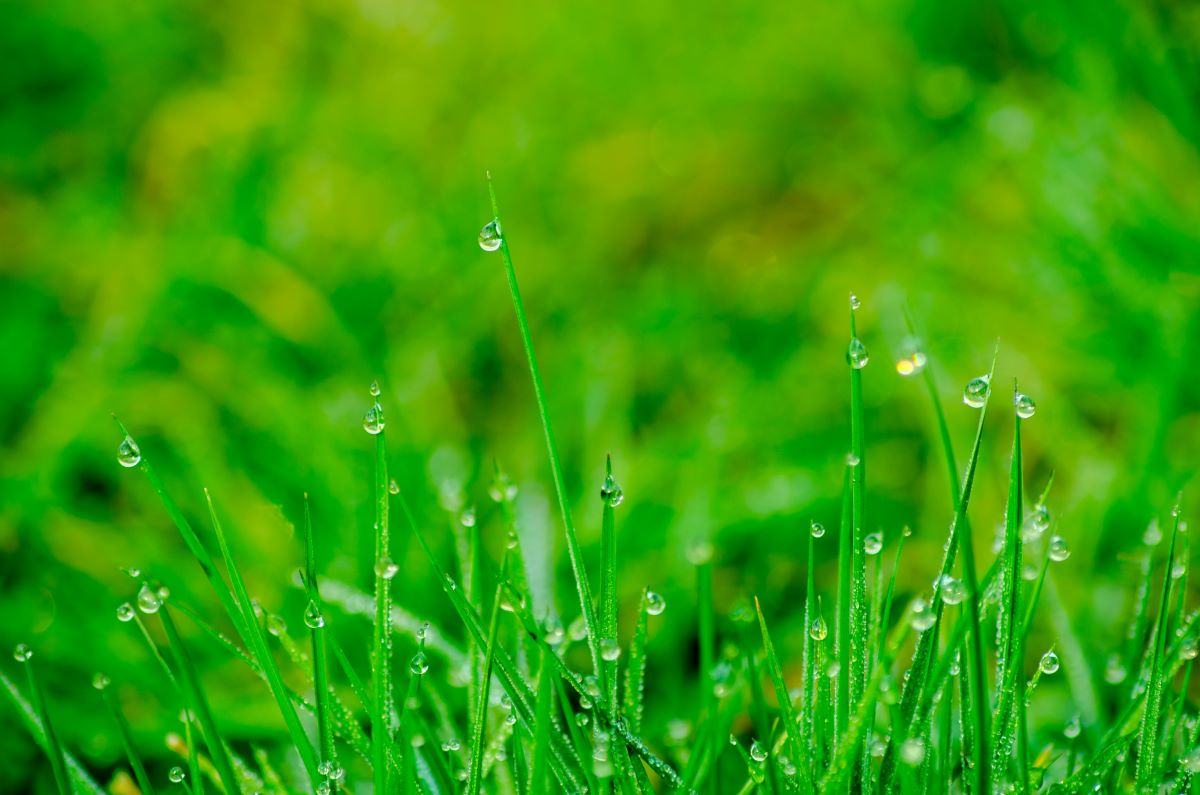Lush, verdant lawns don’t just happen overnight – they are a testament to meticulous care and sustained effort. An essential facet of this care is irrigation, a practice which ranges from simplistic watering cans to elaborate in-ground systems. The science of lawn irrigation transcends mere watering, infusing aspects of biology, ecology, engineering, and even regional climate into a harmonious blend that sustains the vibrancy of your outdoor spaces. To help you navigate this landscape, we have compiled a comprehensive guide which aims to demystify the intricate universe of lawn irrigation. Whether you are an aspiring green thumb or an experienced gardener, this guide serves as a valuable resource on types, installation, maintenance, and sustainability of lawn irrigation systems. Let’s check out this guide to mastering lawn irrigation.
Understanding the Basics of Lawn Irrigation Systems
Understanding Lawn Irrigation Systems
Lawn irrigation systems are specialized installations designed to distribute water around a landscape, nourishing plants, and maintaining lush green grass. They’re a crucial part of lawn care and landscaping because they ensure water efficiency and enable the delivery of the right amount of moisture to different plants. Well-designed irrigation systems help in the conservation of water, contributing to both environmental preservation and cost savings.
Importance of Lawn Irrigation Systems
The significance of lawn irrigation systems lies in their ability to provide consistent and appropriate watering to lawns. Irregular or improper watering can lead to a range of problems like lawn diseases, weed growth, and uneven discoloration. These systems provide the right amount of watering at correct intervals, helping to sustain vibrant and healthy lawns while conserving water through efficient distribution. In dry climates and during summertime, lawn irrigation systems can be the difference between a vibrant, green yard, and a dry, faded one.
Common Types of Lawn Irrigation Systems
Sprinkler systems, drip systems, and soaker hoses are among the most common types of lawn irrigation systems. They each have unique characteristics which make them suitable for particular lawn needs and climates.
- Sprinkler systems: Widely used for their effectiveness and versatility. They mimic rainfall by spraying water over a large area, making it an excellent choice for lawns with a larger size and well-spaced planting. It’s worth noting that sprinkler systems can sometimes overwater, so they need to be accurately timed to provide optimal irrigation.
- Drip systems: Provide targeted watering, delivering water directly to the base or roots of plants, promoting deep watering and reducing water wastage. Suitable for smaller landscape areas, water-sensitive plants, and areas with water restrictions.
- Soaker hoses: Made with permeable material, these hoses deliver water directly into the soil when the water pressure is turned on. This process allows water to seep slowly into the ground, reaching the roots of plants more effectively. Important to remember that soaker hoses might not be suitable for larger areas due to their design and watering capacity.

Principles of Lawn Irrigation Systems
The principles behind lawn irrigation systems focus on the conservation of water while ensuring the optimal health and look of a lawn. An efficient system should deliver the right amount of water at the right time without wastage. Timing, placement, and the types of plants watered are all considerations in designing a suitable lawn irrigation system.
- Appropriate use of water includes only applying what’s necessary to avoid runoff or waterlogging and using the optimal watering schedule adjusted for weather conditions. A smart irrigation system can even automatically adjust the water schedule based on measured or forecasted rainfall.
Introduction to Lawn Irrigation Systems
The selection of a proper lawn irrigation system largely depends upon several key components such as the lawn’s dimensions, the variety of plants present, and the climate of the region. The most commonly utilized systems range from sprinkler systems, drip irrigation to soaker hoses, each tailored and timed to maximize efficiency while minimizing water wastage. Comprehending the specific needs of your lawn is the primary phase in implementing an appropriate watering solution that maintains the health and appearance of your outdoor green space.
Mastering Lawn Irrigation: Choosing the Right System
Familiarizing With Various Irrigation Systems
Lawn irrigation systems are integral for preserving the vibrancy and health of your lawn, stimulating the growth of robust grass and plants. Numerous types of systems are available, each offering unique advantages and potential drawbacks. Hence, choosing the most beneficial system necessitates a thorough understanding of several factors including the size and type of your lawn, along with your area’s climate conditions. This knowledge will guide you in making an informed decision that best fits your lawn’s irrigation needs.
Assessing Lawn Size
The size of your lawn profoundly impacts the choice of the irrigation system. For small lawns, portable sprinklers could be an ideal choice, as these are easy to move around and adjust to spray water precisely where it’s needed. For medium-sized lawns, stationary sprinklers or oscillating sprinklers may be more suitable; these provide uniform water distribution over a greater area. Large lawns, on the other hand, may benefit most from underground or drip irrigation systems, capable of efficiently hydrating extensive areas and minimizing water waste.
Considering Grass Type
The grass type planted in a lawn also plays into the type of irrigation system required. For instance, cool-season grasses like Kentucky Bluegrass or Perennial Ryegrass usually have deep root systems needing deep, but less frequent, watering—best achieved through drip or soak irrigation systems. Warm-season grasses such as Bermuda grass or Zoysia grass have shallow root systems and may require frequent but light watering, easily accomplished via sprinkler systems.
Factoring in Local Climate
Climate is another important aspect in choosing the perfect irrigation system. Areas with high rainfall may only need supplemental irrigation during dry spells, making a simple sprinkler system adequate. For regions with less frequent rain, a drip or soak irrigation system can ensure consistent, deep watering. It’s also crucial to consider evaporation rates. Hot and windy climates can lead to high evaporation, making underground systems or early morning watering more efficient.
Comparing Different Irrigation Systems
When you compare the benefits and drawbacks of different irrigation systems, sprinklers are quite efficient for smaller lawns or for climates with consistent rainfall. They’re relatively inexpensive and easy to install, but they might waste water through evaporation and over-spray, especially in windy conditions.
On the other hand, drip irrigation systems can be more efficient for large lawns or for lawns with a variety of plant types. They deliver water directly to the root zone of each plant, minimizing both water waste and weed growth. They’re also less susceptible to wind interference. But they can be more expensive to install and require more maintenance to prevent clogging or leaks.
Soak or soaker hose systems, ideal for lawns with deep-rooted grass, are beneficial as they slowly seep water into the soil, promoting deep watering. This reduces evaporation and the risk of over-watering, though these systems can be more difficult to install and control, often requiring a timer to prevent overuse.
Final Thoughts
When it comes to finding the perfect lawn irrigation system, you must take into account variables such as the size of your lawn, the grass type, and your local climate. It’s only by assessing the advantages and disadvantages of assorted irrigation systems that you’ll be equipped to determine the optimal approach keeping your lawn lush and aesthetically pleasing.

Installation and Setup of Lawn Irrigation Systems
Initial Steps: Planning and Designing a Lawn Irrigation System
The planning and design phase is vital when it comes to putting in a lawn irrigation system. The preliminary steps entail mapping your lawn, pinpointing which areas need more or less hydration, and picking the right type of irrigation. Generally, there are three types of systems to choose from: the sprinkler systems, the drip irrigation systems, and the rotor systems.
Sprinkler systems are widely used due to their extensive coverage and automation capabilities. On the opposite side of the spectrum, drip irrigation systems are ideal for smaller lawns or garden beds, and they cut back on water wastage by directly hydrating the root areas. Rotor systems, meanwhile, water large areas efficiently by releasing water in a rotating pattern at a slow rate, giving the soil enough time to absorb the water.
Tools and Materials
One of the central parts of system installation is gathering the necessary tools and materials. Among the most common are trenching shovels for digging channels for your irrigation lines, pipe cutters for adjusting the length of your irrigation pipes, and connectors to join parts together.
Other important materials include the irrigation pipes themselves, stakes for securing pipes, and backflow preventers to stop contaminated water from flowing back into your clean water supply.
Preparation and Installation
Before you start digging, ensure to mark the positions of all sprinkler heads or drip lines as per your system’s layout. When setting these up, it’s important to follow the manufacturer’s instructions and guidelines on sprinkler spacing.
The next step is to dig trenches for your irrigation pipes. The depth of these trenches will depend on a few factors, such as your area’s frost line and the type of system you are installing. Remember, the proper installation of backflow preventers is crucial as it protects your water supply from contamination.
Installing the control valves and timer is another crucial part of the installation process. The control valves regulate the flow of water to the different zones of your irrigation system, and the timer automates these sequences based on your settings.
Safety Considerations
Safety is a significant aspect of installing a lawn irrigation system. Before digging, always check with your local utility companies to identify the locations of underground cables and pipes. Exercise caution while handling tools and sharp objects to avoid injuries.
Key Considerations and Potential Mistakes in Lawn Irrigation Systems
To ensure optimality and efficiency of your lawn irrigation system, it’s crucial to use high-quality materials and accurate measurements. A poorly planned system can result in overwatering or underwatering, which may harm your lawn. The lack of backflow preventer places your water supply at risk of contamination, and neglecting to mark your dig lines can inadvertently damage your underground utilities. Steering clear of these common mistakes contributes to a successful installation.
Bear in mind that the installation process varies, subject to the specific type of system and its individual requirements. Therefore, seeking the advice of a professional or undertaking comprehensive research prior to beginning will not only save you time but also ensure a well-run and effective lawn irrigation system.
Maintenance and Troubleshooting of Irrigation Systems
Maintaining Your Lawn Irrigation Systems: A Regular Check-Up
An ongoing routine of maintenance is vital to let your irrigation system operate at its peak and prevent minor problems from growing into major issues. A regular inspection of your sprinkler heads for potential clogging or damage helps you avoid any troubles in the long run. This includes validating that they’re finely adjusted to provide efficient watering to your lawn without unnecessarily dispersing water onto sidewalks or driveways.
Importantly, periodic leak checks in the system constitute a critical aspect of routine upkeep. Even the smallest leaks can culminate in a significant loss of water over a while and inadvertently propel your water bills to skyrocket.
Observing and adjusting the irrigation controller settings depending on prevailing weather patterns along with the current health status of your lawn enables you to optimize your watering efficiency.

Seasonal Maintenance of Irrigation Systems
The changing seasons necessitate specific maintenance routines for irrigation systems. Before winter sets in, you must winterize the system to prevent freezing temperatures from causing damage to the system’s components. This usually involves draining water from the pipes and disabling the system.
As spring approaches, restarting the system involves checking for any winter damage before gradually introducing water into the system to avoid pressure damage. When summer arrives, tweak the watering schedule to account for hotter temperatures and longer daylight hours. During fall, adjust the watering based on the reduced water needs of the lawn and start preparing your irrigation system for winter.
Identifying Common Problems with Irrigation Systems
The key to troubleshooting an irrigation system is understanding the signs of common problems. Patchy areas of dry grass may indicate a non-functioning sprinkler head, while soggy sections of the lawn can suggest a leak or overwatering situation. If you notice a spike in your water bill, it could indicate a leak within the system. Additionally, puddling of water around the sprinkler heads might signal that the sprinkler is watering too quickly for the soil to absorb the water.
Addressing Common Malfunctions
When a glitch in your irrigation system arises, immediate troubleshooting steps should be taken. If you encounter a blocked sprinkler head, the best solution is to remove, clean, and reinstall it. If the head is fractured, purchasing a new one is usually the most beneficial course of action.
Leakages necessitate locating the originating point before mending can occur. When the leakage is within the irrigation line, the repair process may entail unearthing the line and substituting the dysfunctional segment.
Issues of excess or deficit water supplies can often be solved by just modifying the controller setups. Conditioned on your level of expertise, it may be beneficial to seek assistance from a lawn care or irrigation professional when rectifying malfunctions.
The Environmental Impact of Lawn Irrigation Systems
Comprehending Environmental Consequences of Lawn Irrigation
Maintaining a rich, verdant landscape requires a substantial supply of water, which is provided by lawn irrigation systems. However, the drawback is the immense pressure it places on local water resources. A significant amount of water is wasted through evaporation, runoff, and over-irrigation. Concurrently, these activities can generate ancillary consequential environmental issues. This can include soil erosion, runoff carrying fertilizers adding to nutrient pollution in water bodies, and escalating stress on community water supplies.
Water Conservation through efficient Irrigation Practices
Water conservation is a primary concern when it comes to lawn irrigation. Efficient irrigation practices can help save water. For instance, the use of technologies like drip irrigation, which delivers water directly to the plant roots, can result in minimal water loss due to evaporation. Moreover, opt for watering early in the morning when temperatures are cooler to limit evaporation and ensure maximum absorption.
Mitigating potential Runoff Issues
Runoff from lawn irrigation can lead to water pollution. The water that runs off lawns can carry fertilizers, pesticides, and sediments into storm drains and eventually to rivers, lakes, and oceans. To minimize runoff, irrigation should ideally be performed in multiple short sessions rather than one long one. This allows for better water infiltration, reducing surface runoff.
Furthermore, maintenance of a healthy lawn including regular mowing, aeration, and prompt removal of weeds can enhance the soil’s capacity to absorb water, hence, reducing runoff.
Adopting Sustainable Irrigation Practices
Besides efficient water usage and runoff management, there are more ways to make lawn irrigation more sustainable. Collecting and using rainwater for irrigation is eco-friendly and also conserves water resources. Additionally, replacing traditional sprinkler systems with rotary nozzles that spray water in a slower, more uniform pattern can minimize water wastage.
Another critical aspect is ensuring your system is in good working condition. Regular inspection for leaks or malfunctions can conserve a significant amount of water over time. A broken sprinkler head can waste as much as 25,000 gallons of water over half a year!
Moreover, transition towards native and drought-resistant plants can reduce dependency on heavy irrigation. Such species are adapted to local climate conditions and require less water than non-native, ornamental species, thereby promoting water conservation.
Cultivating an Eco-friendly Lawn through Efficient Irrigation Practices
A lawn can indeed be a source of joy and beauty, but it is crucial to manage it in an environmentally sustainable way. By adopting efficient irrigation practices, we can significantly reduce water usage, control runoff, and enhance the overall ecological health of the landscape. It is well within our grasp to enjoy the benefits of a vibrant lawn while preserving precious environmental resources for future generations.
As with all things in nature, balance is key when it comes to lawn irrigation. An optimal lawn irrigation system not only fulfills the thirst of your grass but also respects the broader environment it inhabits. Knowledge of different irrigation systems, their installation and maintenance, paired with consideration for local climate and environmental impact, can empower you to make informed choices. By consciously applying these principles, you can cultivate a garden that is more than just aesthetically pleasing – it becomes a model for sustainable and responsible gardening. As you venture into or delve deeper into your gardening journey, may this guide to mastering lawn irrigation serve as an aid and inspire you towards establishing a healthy and sustainable green space. Let your lawn be a testament to the beauty and resilience of nature, thriving under the care of a responsible and informed gardener.

